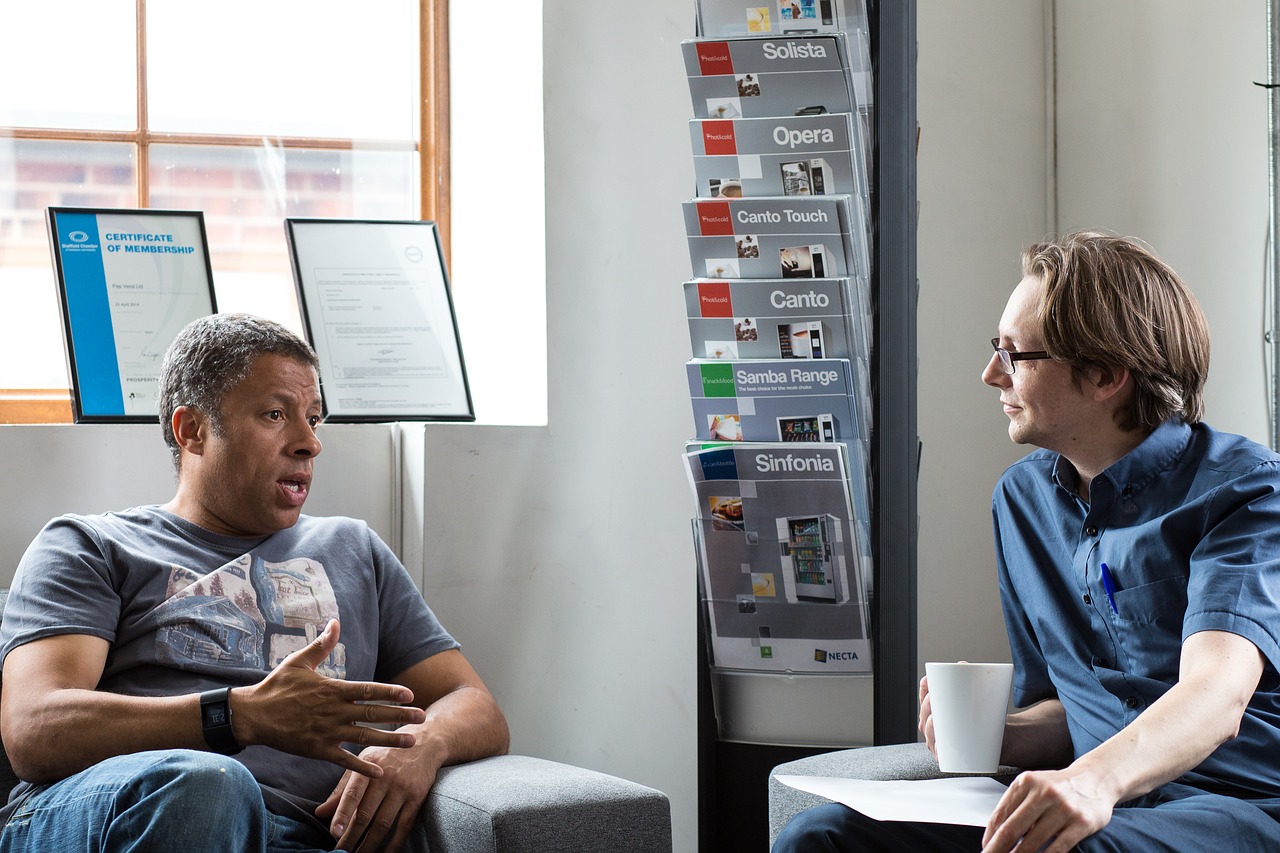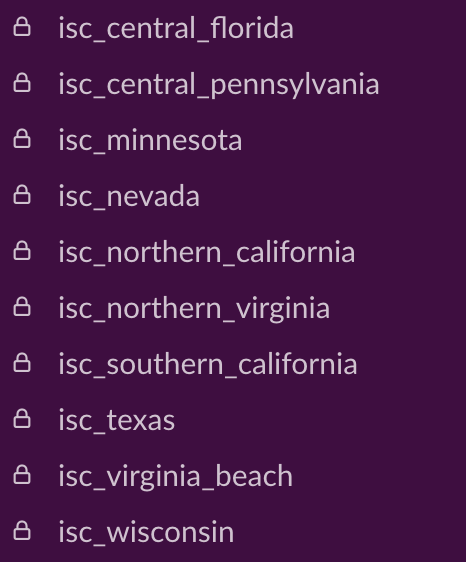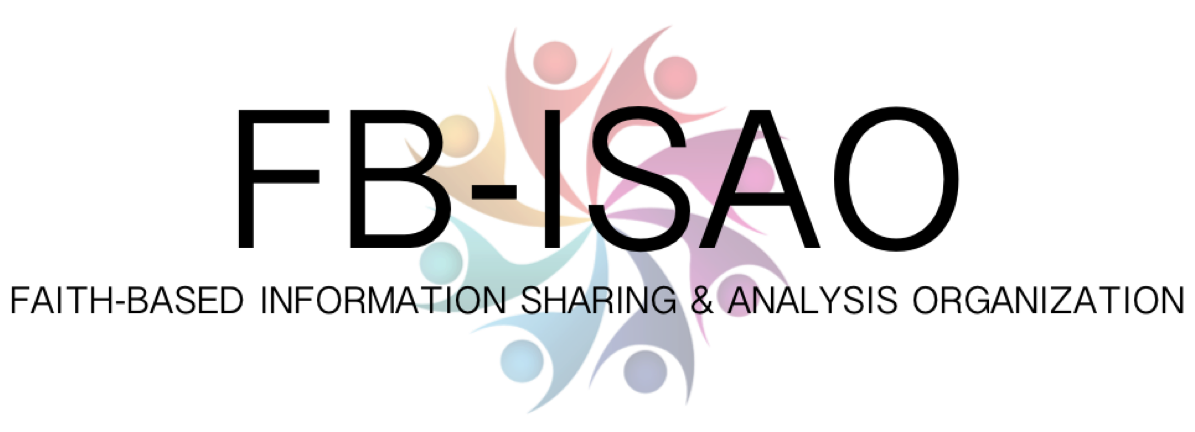The DAP highlights 'Chilling reminder': Multiple historically Black universities under lockdown after receiving threats, "Hate has no place in our communities": US Congressman Subramanyam condemns attacks on Hindu temples in US, and Plains face heightened severe weather risk from Friday into Saturday. The DAP also has More Faith-Based Stories and Select All-Hazard Stories. These updates are shared to help raise the situational awareness of Faith-Based organizations to best defend against and mitigate the impacts from all-hazards threats including physical security, cybersecurity, and natural disasters.

Member Conversations
A Powerful Tool in Your Preparedness Tool Belt
By Mayya Saab
Recently, two members had an impromptu conversation, on a Slack channel, on the Faith-Based Information Sharing and Analysis Organization (FB-ISAO) Slack workspace (please note that this conversation occurred on a channel with 12 members. Direct messages between members occur privately between the recipients and cannot be accessed – not even by the admin.) The non-attributional conversation is highlighted below with the members’ permission.
Member A: We’re thinking about engaging CSS.
Member B: If you’re interested in engaging CSS, I am a member and in contact with their leadership. Also have good contacts into SCN & ADL if needed. We can also engage CISA.
Member A: How has your experience with CSS been? We’re looking at bringing them here.
Member B: Very good. It’s an organizational commitment, but worthwhile. I can discuss it with you by phone if you want.
Member A: I may take you up on it if it appears we’re solidly heading in that direction. We have an unarmed team at the shul, but I believe CSS would help us take it to another level.
Member B: Probably so. I’d be interested in hearing how your unarmed team integrates with armed security.
Member A: Deferentially. For most services, we have a contract security guard and two members of our team on patrol, outside. Our team members are instructed to provide support as directed if the situation arises. Our members serve are first line greeters and spotters and alert the guard of anything untoward we see developing as people approach. We’ve never had to test the relationship, thankfully.
Member B: We have a similar philosophy, but I would like to get more training for our volunteers. CSS training for would be ideal for our members, but there is a lack of will to volunteer. We have new, younger clergy that just started who appear very supportive of our efforts, so there may still be hope. In the meantime, we use greeters for Sabbath services, etc…. when we can find them…and ushers (with more “see something, say (do?) something” training).
Member A: Yes. We are undertrained as well. Have ALICE coming next week under an NSGP grant to begin to address that and hope to build from there. We have a new team leader coming in as well. We do an annual training around the High Holidays, but really need to elevate training among members. We also need to do a better job of getting basic principles and awareness out to our rank-and-file congregants. We’ve been relying on physical security upgrades over the past several years to harden the facility, we need to focus on the human factor side next.
Member B: Sounds like we could trade places! Our focus on target hardening was because we got grants. (And it’s easier to explain those counter measures to the Board.) But everyone wants easy, passive measures or “guards with guns”. Most are not willing to put in the effort for the other 80% of what needs to be done. Fortunately, we’ve received considerably more support since some of the higher visibility incidents. I now have a security BUDGET, pretty much everything I asked for. It’s the human support — volunteers — we still struggle with. On another note, what do you prefer about ALICE vs. Run, Hide, Fight?
Member A: ALICE really is Run-Hide-Fight with different terminology – they settled on the acronym before the much catchier ‘RHF’ was coined. I’ve been through their instructor course, and find the live, scenario-based active training be a huge advantage over simple classroom lecture or eLearning instruction. Going through the live exercises, evacuating a room, barricading a room, fighting back with a quickly organized swarm drives home the “you can do this and survive” mentality you need to effectively respond in the moment; and practicing it in your own facility, in your own sanctuary, social hall, classrooms, parking lot can’t be beat.
Member B: Ah! I didn’t know it involved live exercises. Excellent. Builds muscle memory. Maybe I’ll look into that version.
When I read the conversation, I was awed by the exchange for two reasons; first, the topic is one that many faith-based organizations are struggling to find answers to and second, because the two members found such huge value in the exchange – they shared best practices, made a connection, and learned from one another. For the purpose of writing this post, I asked the members about the value their membership in FB-ISAO in relation to this conversation. One of the members responded with “I probably never would have met ‘Member B’ nor had this conversation if I had not gotten to know him via the ISAO’s communications platform.”
When I speak about the capabilities available to members of FB-ISAO, I highlight the power of conversations like these and I stress that that there is no ONE right answer to building resilience in this vulnerable community BUT there are MANY right answers. I talk about how conversations like this one can uncover best practices that can address gaps, or enduring challenges faced by one or many member organizations.
FB-ISAO has established protocols to allow members to feel safe in sharing conversations with each other. Those protocols include:
- Use of the TLP protocol. The Traffic Light Protocol (TLP) was created to facilitate greater sharing of information. TLP is a set of designations used to ensure that sensitive information is shared with the appropriate audience. It employs four colors to indicate expected sharing boundaries to be applied by the recipient(s). To learn more about the TLP Protocol, please refer to the FB-ISAO membership page.
- If FB-ISAO deems that information shared within the group might be useful to others, we always check-in with the information originators to ask if they will allow that information to be shared for the greater good. Before sharing this conversation, we requested permission from the originators to do so.
- Information shared, which may include conversations, incident reports, best practices, or other documents is more often made non-attributional. Meaning that the name(s) of the originator(s) is stripped out much like this conversation is stripped out of any names, dates, and setting.
- The FB-ISAO collaborative workspace allows for information sharing not only in a general setting but also in specific localities. FB-ISAO’s Information Sharing Communities (ISCs) channels allow for information sharing that is specific to a region, state or specific area within a state. Below, on the right, is an image of our active ISCs.

Information sharing as a concept has really taken off in the past twenty years and that’s something we all benefit from. Arming individuals with resources and information has certainly contributed to building resilience not only in this community but in others as well. Conversations about how to use shared resources will likely make those resources even more useful.
To learn more about the benefits available to our members, please watch this video. And to learn more about the membership programs we offer, please visit our membership page. If you’d like to talk further with the two members about their exchange, their experiences, or have any follow-on questions about their discussion, let the team know. I’m sure those two members would be willing to share their insights with any other members. After all, that kind of communication is what FB-ISAO is all about- that’s what we’re here for!
I encourage each one of our members to reach out and have one or many conversations about some of the numerous security challenges they face at their individual facility – who knows – in doing so, members may find the answers they seek!



